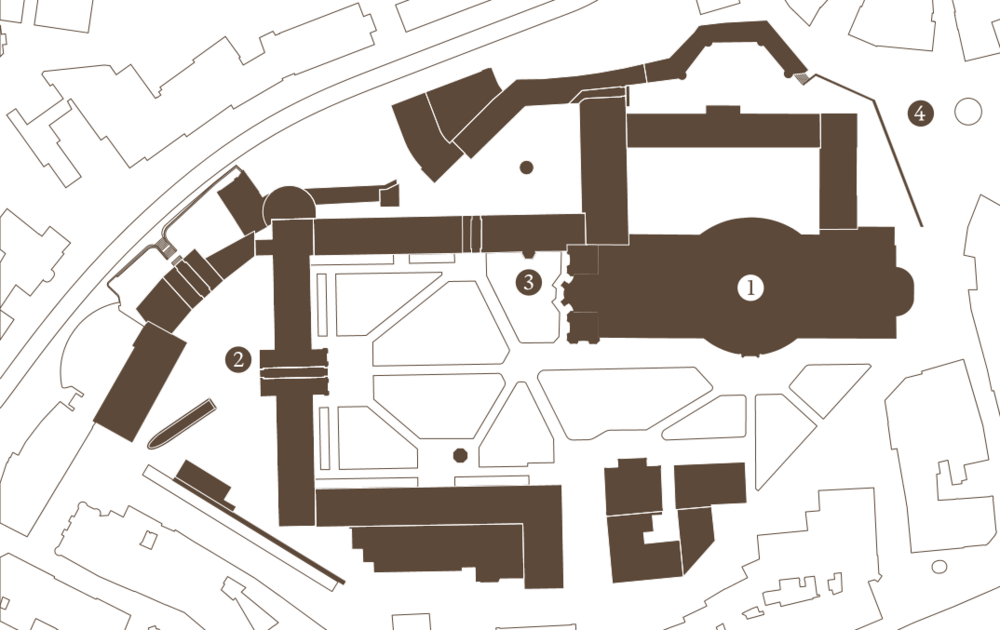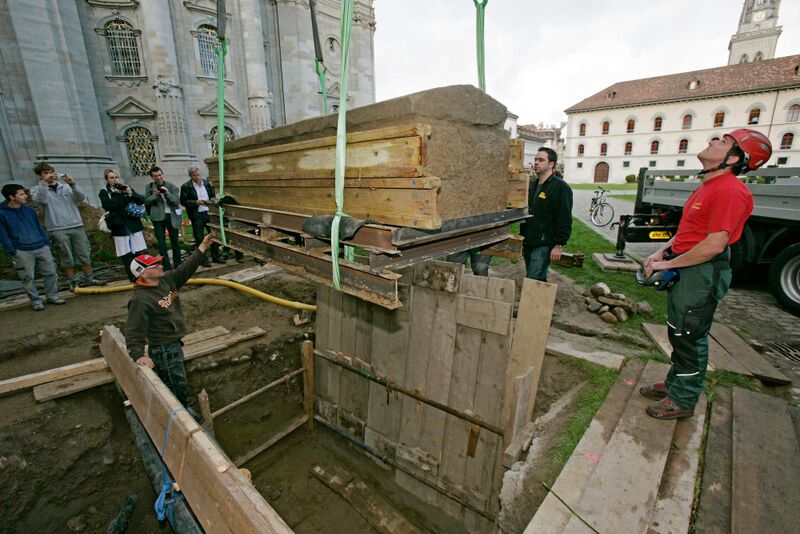Archaeology
The 1,400-year-old traces of St Gall’s history are found not only in the Abbey Archives and Abbey Library, but also in the soil. Archaeological digs reveal information about the beginnings of settlement, the boundaries of the Abbey and the town, early construction history, and the lives and deaths of former residents. The purpose of archaeology is not, however, to excavate as much material as possible, but to preserve surviving layers and finds in the earth wherever possible. Future generations, with their vastly improved methods, should also have a chance to study the history of the UNESCO World Heritage site. Valuable treasures thus await tomorrow beneath the ground!
Since 2009 the archaeological team in the Canton of St.Gallen has been supporting and recording all underground procedures within the Abbey grounds and the old town. State-of-the-art techniques (ground radar) have also been used for non-destructive investigations of the soil below the courtyard. The findings show that a great deal of history is still concealed in the earth.
Significant excavations were undertaken in 1963–1967 during major restoration in the Cathedral. Traces were found of the early hermit settlement, the abbey church built by Othmar, Gozbert’s big 9th-century church, and remnants of Gothic and baroque annexes. One find worth a special mention are the Carolingian capitals from Gozbert’s church. They are on display in the cellar of the Abbey Library together with remnants of the Gothic library and vaulted choir. In 1998, during conversions to the Palace cellar, a graveyard was found under the small courtyard which had evidently been in use between the 7th and 11th centuries. The skeletons revealed there indicated that inhabitants of the monastery benefited from a healthy diet. The story of the murder victim in Grave no. 13, reconstructed by anthropological and forensic research, is on show in the Museum of History and Ethnology.
When the southern section of the old town was undergoing redevelopment (2009–2013) there were numerous archaeological investigations and digs. Of particular note is the 7th-century stone sarcophagus discovered in the courtyard in 2009. It was lying right next to the first chapel, built for Gall. The unique sarcophagus and the reconstructed head of the deceased can be seen in the Museum of History and Ethnology. A short film was made about this significant find.
The new signage in the Abbey complex also indicates the sites of these important archaeological finds. Major excavations were carried out in 2011–2012 on the nearby square called Gallusplatz. High-density building was observed, including a round structure dating from the 8th century. Its location is now marked by a bronze plaque.
Martin Schindler, Canton Archaeologist
More details:
www.sg.ch/kultur/archaeologie.html
www.hvmsg.ch

